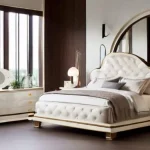When it comes to creating a peaceful and inviting bedroom, sometimes less truly is more. Minimalist bedroom ideas focus on simplicity, functionality, and intentional design choices that create a space where you can relax and recharge. But what exactly is minimalism, and why is it becoming so popular in interior design?
Minimalism is more than just a design trend; it’s a lifestyle choice that emphasizes clarity, purpose, and a deep appreciation for the essentials.
By stripping away the unnecessary, minimalist design allows you to focus on what really matters, both in your surroundings and in your life.
In a world that often feels cluttered and chaotic, a minimalist bedroom offers a serene retreat where you can unwind in a space that reflects simplicity and order.
The Core Principles of Minimalist Design
Simplicity
At the heart of every minimalist bedroom is the concept of simplicity. This doesn’t mean your space has to be boring or bland—instead, it’s about creating clean lines and uncluttered spaces that are easy on the eyes and the mind. Imagine walking into a bedroom where every item has a purpose, and nothing feels out of place. That’s the beauty of simplicity in minimalist design.
To achieve this, start by decluttering your space. Keep only the essentials and remove any unnecessary items that don’t contribute to the overall aesthetic or function of the room. Think about how a simple bed frame, a nightstand, and a few carefully chosen decor pieces can make a powerful statement without overwhelming the senses.
Functionality
Functionality is another key element of minimalist bedroom ideas. In a minimalist space, every piece of furniture and decor serves a purpose. This doesn’t mean sacrificing style for practicality—on the contrary, it’s about finding pieces that combine both.
For example, consider a bed with built-in storage or a multi-purpose nightstand that also functions as a desk. These kinds of choices help you maximize your space while maintaining a clean and cohesive look. The goal is to create a bedroom where everything has a function, reducing the need for excess items that can lead to clutter.
Intentionality
Intentionality is all about making deliberate choices in your bedroom design. Rather than filling your space with random decor, every item should be chosen with care and purpose. This principle encourages you to think critically about what you bring into your bedroom and to prioritize quality over quantity.
When selecting decor, ask yourself if it adds value to the room. Does it serve a function, or does it enhance the overall aesthetic? By being intentional with your choices, you’ll create a space that feels thoughtfully curated rather than haphazardly assembled.
Incorporating these core principles of minimalism—simplicity, functionality, and intentionality—into your bedroom design will help you create a space that is not only beautiful but also deeply personal and reflective of your lifestyle.
Whether you’re starting from scratch or simply looking to refresh your current space, these minimalist bedroom ideas will guide you in crafting a serene and stylish retreat.
Minimalist Color Palettes
One of the defining features of minimalist bedroom ideas is the use of a simple, calming color palette. Colors have a significant impact on the mood of a space, and in a minimalist design, the goal is to create a tranquil environment where you can unwind and relax.
Neutral Tones
Neutral tones are the cornerstone of minimalist color palettes. Think soft whites, gentle greys, and muted earth tones like beige and taupe. These colors are timeless, versatile, and help to create a sense of calm in your bedroom. By using a neutral base, you allow the room’s design elements—like furniture and decor—to stand out without overwhelming the senses.
A bedroom with white walls and light grey bedding, for example, can feel both serene and sophisticated. Neutral tones also have the added benefit of making your space feel more open and airy, which is especially helpful in smaller bedrooms.
Monochromatic Schemes
If you’re looking for something a bit more dynamic but still within the minimalist framework, consider a monochromatic color scheme. This involves using varying shades of a single color to add depth and interest to your bedroom without introducing too many contrasting elements.
For instance, you might choose a deep charcoal grey for an accent wall and complement it with lighter grey bedding and decor. The subtle variations in shade create visual interest while maintaining the cohesive, calming effect that’s central to minimalist design.
Accent Colors
While minimalism often leans towards simplicity, that doesn’t mean you have to avoid color altogether. Thoughtfully chosen accent colors can add personality and warmth to your bedroom without disrupting the minimalist aesthetic.
The key is to use accent colors sparingly. For example, a soft blush throw pillow or a navy blue vase can add a touch of color without overwhelming the space. These accents should complement the neutral or monochromatic base and serve to enhance the room’s overall harmony.
You can create a minimalist bedroom that feels both peaceful and inviting. Whether you stick to classic neutrals or experiment with monochromatic schemes and subtle accents, the right colors will help you achieve the minimalist look you’re aiming for.
Furniture Selection
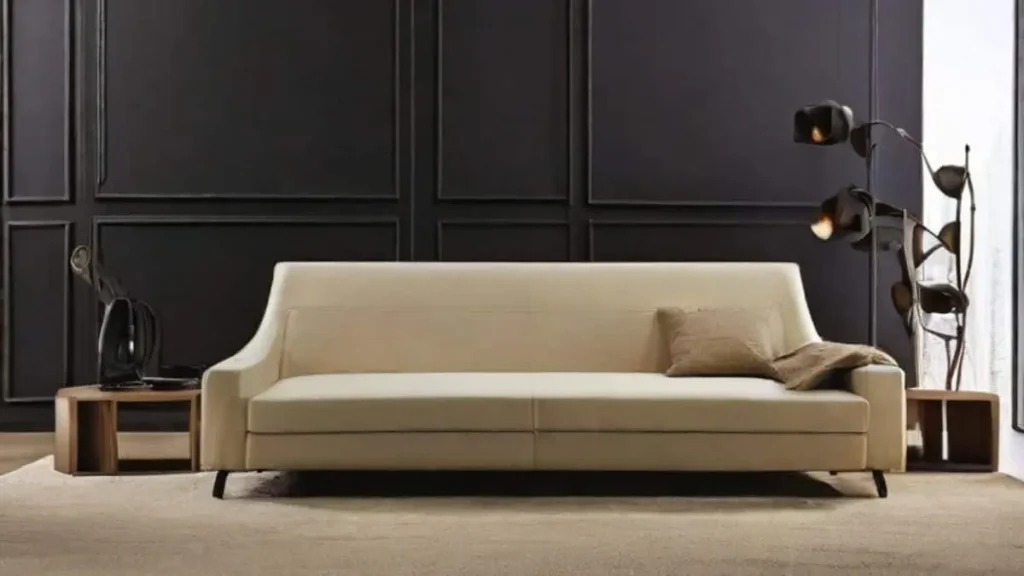
In a minimalist bedroom, furniture plays a crucial role in both form and function. The key is to choose pieces that are not only aesthetically pleasing but also serve a practical purpose. With the right furniture, you can create a space that is both stylish and functional, perfectly aligned with minimalist principles.
Essential Pieces
When it comes to minimalist bedroom ideas, less is definitely more. Start by focusing on the essential furniture pieces—those that you truly need to make the space comfortable and functional. This usually includes a bed, a nightstand, and perhaps a dresser or wardrobe, depending on your storage needs.
Opt for a simple bed frame with clean lines and minimal detailing. A low-profile platform bed, for example, can add a sleek and modern touch to your room without dominating the space. Similarly, choose a nightstand that complements your bed without being too bulky or ornate.
The idea is to keep the furniture to a minimum while ensuring that each piece is both useful and stylish. This approach not only helps maintain the minimalist aesthetic but also creates more space for movement, contributing to the overall sense of calm and order.
Materials and Finishes
The materials and finishes you choose for your furniture can have a big impact on the look and feel of your minimalist bedroom. Natural materials like wood, metal, and glass are often favored in minimalist design for their simplicity and durability.
Consider a wooden bed frame with a natural finish, paired with a metal nightstand for a touch of contrast. The combination of these materials can create a warm, inviting space that still feels clean and uncluttered. Glass elements, such as a simple bedside lamp or a small mirror, can add lightness and elegance without overwhelming the design.
Texture is also important in minimalist design. Incorporating different textures, like a smooth wooden dresser with a soft woolen throw, adds depth and interest to the room while maintaining the minimalist vibe.
Investing in Quality
In a minimalist bedroom, where every piece of furniture has a purpose, quality becomes even more important. Investing in high-quality furniture ensures that your pieces will last longer and maintain their appearance over time.
Choose pieces that are well-made and timeless in design, so they don’t quickly go out of style. A sturdy bed frame, for example, or a well-crafted wardrobe will not only serve you well for years to come but also add to the overall aesthetic of your bedroom.
Choosing the right materials, and investing in quality, you can create a minimalist bedroom that is both functional and beautiful. Each piece of furniture should contribute to the room’s overall harmony, helping to create a space where you can relax and recharge.
Minimalist Decor and Accessories
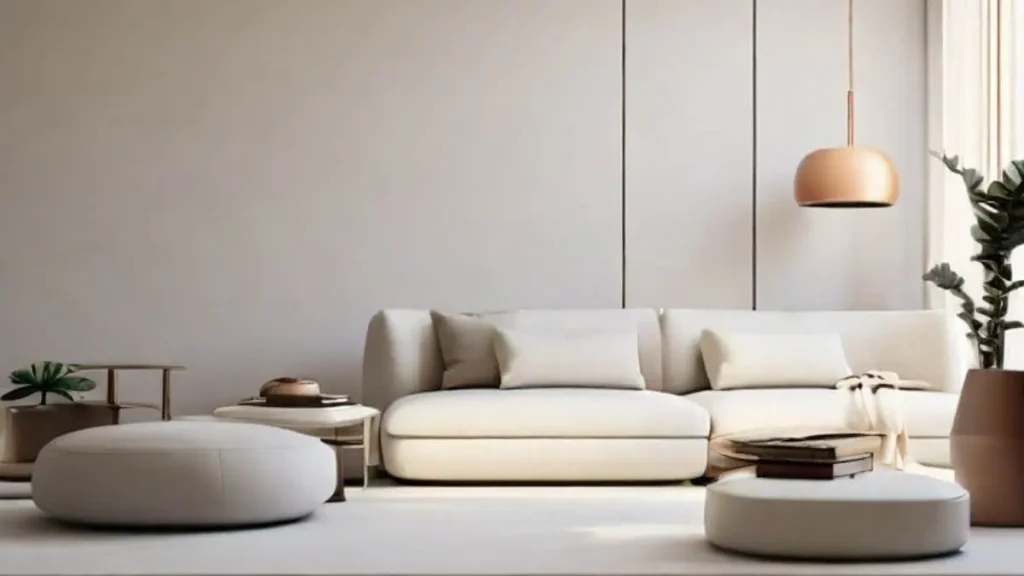
Decorating a minimalist bedroom is all about balance. The goal is to enhance the space with thoughtful touches without cluttering it with unnecessary items. Minimalist decor and accessories should complement the room’s simplicity and functionality while adding a touch of personality.
Art and Wall Decor
When it comes to wall decor in a minimalist bedroom, less is more. Instead of filling the walls with multiple pieces of art, choose one or two that truly resonate with you. A single large piece of artwork can serve as a focal point, adding interest and character to the room without overwhelming it.
Opt for art that reflects the minimalist aesthetic—think abstract pieces, black-and-white photography, or simple line drawings. The key is to choose pieces that are visually striking yet understated, allowing the rest of the room to breathe.
Remember, the empty space around your artwork (often referred to as “white space”) is just as important as the art itself. It gives the eye a place to rest and contributes to the overall feeling of calm in the room.
Textiles and Bedding
Textiles play a crucial role in creating a cozy and inviting minimalist bedroom. The right bedding can add warmth and comfort while maintaining the room’s clean and uncluttered look.
When choosing bedding, opt for high-quality materials in neutral tones or soft monochromatic shades. Crisp white sheets, a simple grey duvet cover, and a couple of textured throw pillows can create a layered, sophisticated look that’s still in line with minimalist principles.
Texture is key to adding depth to your minimalist bedroom without resorting to busy patterns or bold colors. A chunky knit throw or a linen bedspread can introduce a tactile element that makes the room feel more inviting.
Lighting
Lighting is a powerful tool in minimalist design, helping to set the mood and enhance the room’s overall aesthetic. Natural light is ideal, so if possible, keep window treatments simple to let in as much light as possible.
For artificial lighting, consider minimalist fixtures like sleek sconces, pendant lights, or a simple floor lamp. These types of lighting solutions provide ample illumination without taking up too much space or adding visual clutter.
A dimmable light or a lamp with a warm glow can also create a cozy atmosphere in the evenings, making your minimalist bedroom feel even more like a sanctuary.
Practical Tips for Small Spaces
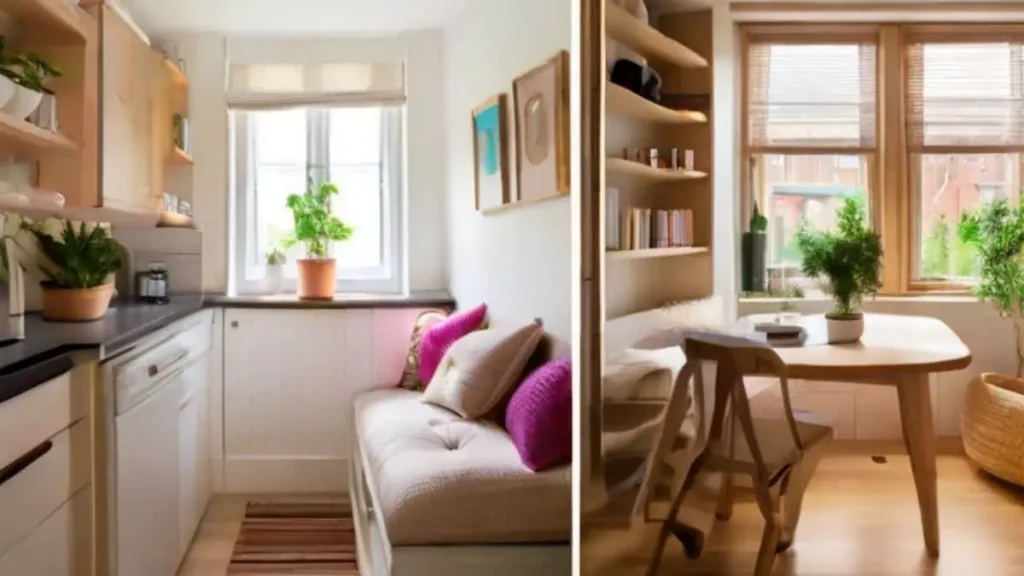
Designing a minimalist bedroom in a small space can be challenging, but with the right strategies, you can create a room that feels open, airy, and functional. Here are some practical tips to help you make the most of a smaller bedroom while staying true to minimalist principles.
Maximizing Space with Minimalist Design
In a small bedroom, every square inch counts. The minimalist approach of “less is more” can help you make the space feel larger than it actually is. Start by choosing multi-functional furniture that serves more than one purpose, such as a bed with built-in storage or a nightstand that doubles as a desk.
Keep the furniture layout simple and avoid overcrowding the room. By leaving enough space between pieces, you create a sense of openness that makes the room feel larger.
Another tip is to use vertical space effectively. Tall, narrow shelving units or wall-mounted storage can provide additional storage without taking up valuable floor space. This not only helps keep the room organized but also contributes to the minimalist aesthetic.
Smart Storage Solutions
One of the biggest challenges in a small bedroom is finding enough storage without cluttering the space. Minimalist bedroom ideas often focus on hidden storage solutions that keep belongings out of sight but easily accessible.
Under-bed storage is a great option for small bedrooms. You can use storage bins or drawers to keep off-season clothing, extra bedding, or other items neatly tucked away. Similarly, built-in wardrobes or closets with sliding doors can save space and provide ample storage without encroaching on the room’s footprint.
Consider also using multi-functional furniture, like an ottoman with storage inside or a bed with built-in drawers. These pieces help you maximize storage while maintaining a clean, uncluttered look.
Mirrors and Lighting
Mirrors are a small bedroom’s best friend. They reflect light and create the illusion of more space, making the room feel brighter and larger. A strategically placed mirror, such as one opposite a window or above a dresser, can dramatically enhance the sense of space in a small room.
In terms of lighting, keep things simple. Recessed lighting or wall sconces free up floor space and add to the minimalist feel. If you have a small nightstand, opt for a sleek table lamp that doesn’t take up much space or consider wall-mounted lamps to keep surfaces clear.
You can create a small minimalist bedroom that feels spacious, functional, and stylish. Even in a limited space, the principles of minimalist design can help you craft a peaceful and organized retreat.
Maintaining a Minimalist Bedroom
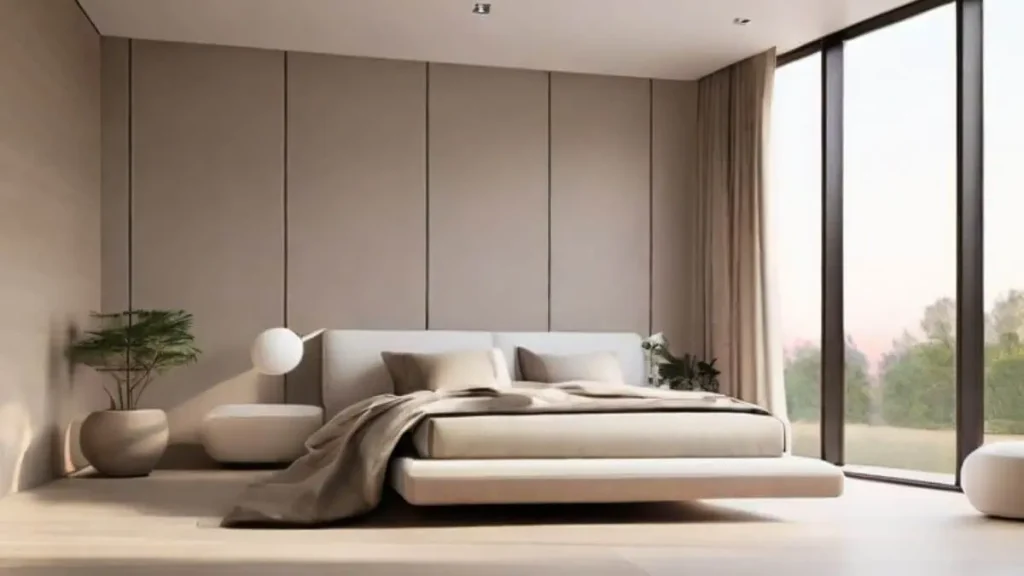
Creating a minimalist bedroom is just the beginning; maintaining its serene and uncluttered look requires ongoing effort and mindful habits. Here are some practical tips to help you keep your minimalist bedroom in top shape:
Regular Decluttering
One of the core principles of minimalism is keeping clutter at bay. To maintain your minimalist bedroom, establish a regular decluttering routine. This might involve setting aside a few minutes each week to evaluate what’s in your room and remove anything that no longer serves a purpose or adds value.
You can use the “one in, one out” rule: for every new item you bring into your bedroom, make sure to remove an old one. This practice helps prevent clutter from accumulating and keeps your space organized.
Mindful Purchases
In a minimalist bedroom, every item should be intentional and purposeful. To keep your space clutter-free, be mindful of your purchases. Before buying something new, ask yourself if it truly adds value to your room or if it’s an impulse buy. Focus on quality over quantity, investing in pieces that you genuinely need and that will complement your existing decor.
Consider creating a wishlist for items you’re interested in, and wait a few weeks before purchasing. This waiting period can help you determine whether you really need the item or if it’s just a passing desire.
Seasonal Updates
Even in a minimalist bedroom, it’s important to refresh the space from time to time. Seasonal updates can help keep your bedroom feeling current and inviting without introducing clutter. You can rotate in different textiles, such as seasonal throw blankets or pillows, to give your room a fresh look.
Be sure to keep these updates minimal as well—focus on one or two items at a time to ensure that the changes are subtle and aligned with your minimalist aesthetic. For example, switching out a summer duvet cover for a warmer winter one can add a seasonal touch without overwhelming your space.
Read Also: Budget-Friendly DIY Bedroom Makeover
Real-Life Minimalist Bedroom Transformations
Seeing how minimalist principles are applied in real-life settings can be incredibly inspiring. Here are a few before-and-after examples of minimalist bedroom transformations that showcase the power of simplicity and thoughtful design.
Before-and-After Examples
The Cluttered to Calm Transformation
- Before: This bedroom was filled with oversized furniture, bright colors, and a mix of patterns that made the space feel cramped and chaotic.
- After: The room was transformed by removing excess furniture and introducing a streamlined bed frame and a simple nightstand. Soft neutral colors and a minimalist art piece on the wall created a serene and spacious feel. The addition of clever storage solutions helped keep the room organized and clutter-free.
The Small Space Success Story
- Before: A small bedroom with limited storage and a cramped layout struggled to accommodate all the essentials while feeling open.
- After: The transformation involved selecting multi-functional furniture, like a bed with built-in drawers and a wall-mounted desk. The use of mirrors and light colors helped enhance the sense of space, while minimalist decor and smart storage solutions kept the room feeling airy and well-organized.
The Modern Minimalist Makeover
- Before: This bedroom featured traditional furnishings and heavy drapes that didn’t align with a modern minimalist aesthetic.
- After: The makeover included replacing the traditional furniture with sleek, modern pieces and swapping out the drapes for simple blinds. The introduction of a monochromatic color scheme and a few well-chosen decor items, like a geometric rug and a minimalist lamp, completed the transformation. The result was a chic and contemporary minimalist bedroom that perfectly balanced form and function.
Key Takeaways
From these transformations, several key lessons emerge:
Simplicity Works: By focusing on essential furniture and decor, you can create a clean and inviting space that feels larger and more organized.
Functionality is Crucial: Multi-functional furniture and smart storage solutions are invaluable in maintaining a minimalist aesthetic, especially in smaller spaces.
Mindful Design Choices: Thoughtfully chosen colors, textures, and accessories can enhance your bedroom’s style without overwhelming the space.
These real-life examples demonstrate how minimalist bedroom ideas can be applied in various contexts to achieve a calm and stylish retreat. Whether you’re starting from scratch or refreshing an existing space, the principles of minimalism can help you create a bedroom that is both functional and beautiful.
Conclusion
Embracing minimalist bedroom ideas is all about creating a peaceful, clutter-free space that feels both stylish and functional. By focusing on simplicity, choosing the right colors and furniture, and incorporating thoughtful decor, you can craft a bedroom that serves as a true retreat from daily stress.
Minimalism isn’t just a design trend; it’s a way to make your bedroom more serene and organized. Remember, every piece you choose should have a purpose and contribute to the overall calm of the room.
So, take these tips and start creating your minimalist sanctuary. With a little effort and intention, you’ll turn your bedroom into a space that’s not only beautiful but also a perfect haven for relaxation. Enjoy the process and the results!



